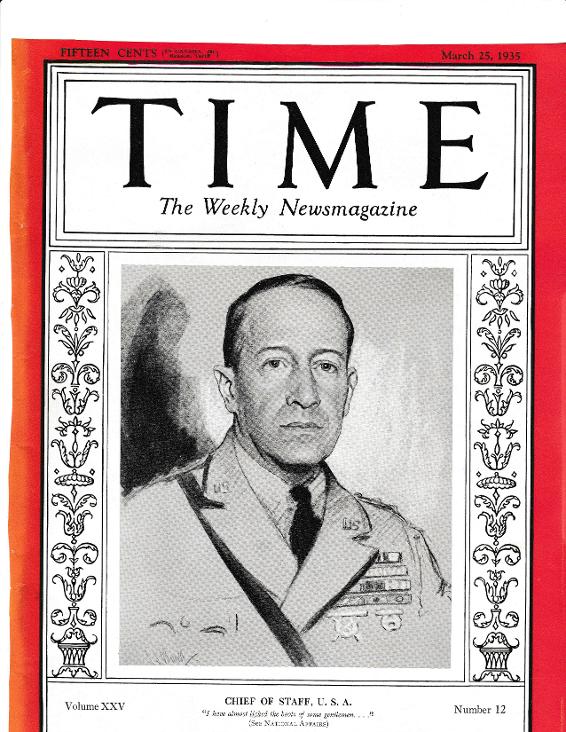General Douglas MacArthur's Letters Sent As Army Chief of Staff, 1931-1935
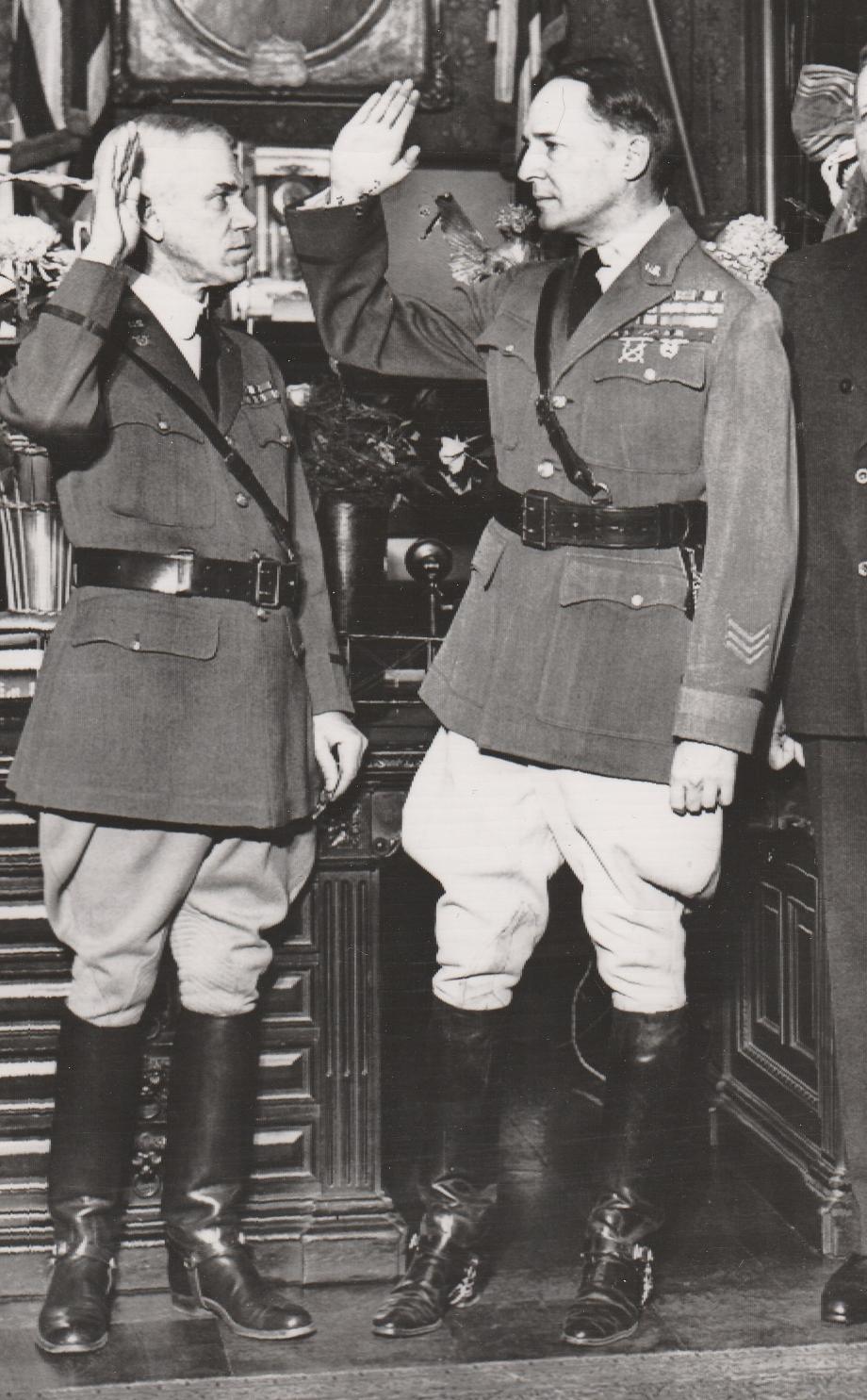
In 1930, despite his relatively young age, Douglas MacArthur's name was put forward for the position of Chief of Staff of the U.S. Army. Approved, he was sworn in that November. As the Great Depression worsened, MacArthur fought to prevent crippling cuts in the Army's manpower but was forced to close over fifty bases. In addition to working to modernize and update the Army's war plans, he concluded the MacArthur-Pratt agreement with the Chief of Naval Operations which helped define each services responsibilities in regard to aviation. One of the best-known generals in the U.S. Army, MacArthur's reputation suffered in 1932 when President Herbert Hoover ordered him to clear the "Bonus Army" from an encampment at Anacostia Flats. The Bonus Army marchers were seeking early payment of their military bonuses. Against the advice of his aide, Major Dwight D. Eisenhower, MacArthur accompanied the troops as they drove off the marchers and burned their camp. Though political opposites, MacArthur had his term as Chief of Staff expended by the newly-elected President Franklin D. Roosevelt. Much of MacArthur's time was spent responding to routine requests and sending congratulatory messages to retiring Army officers.
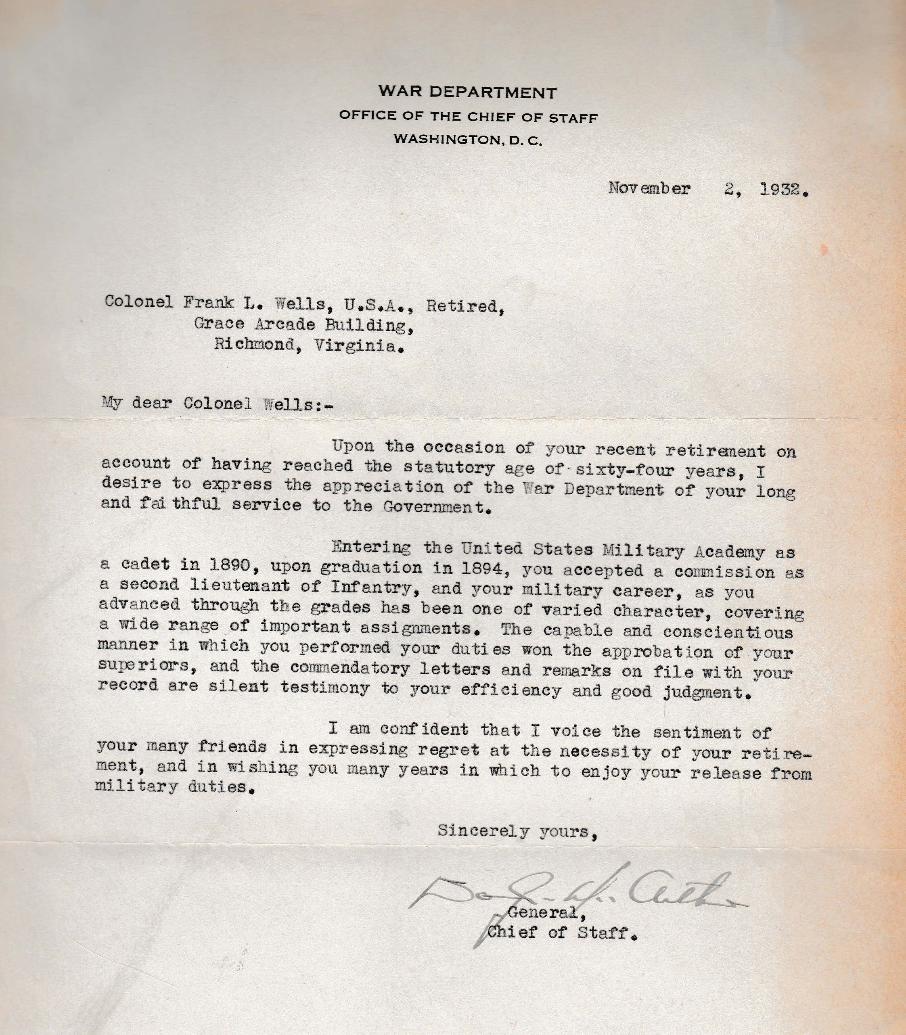
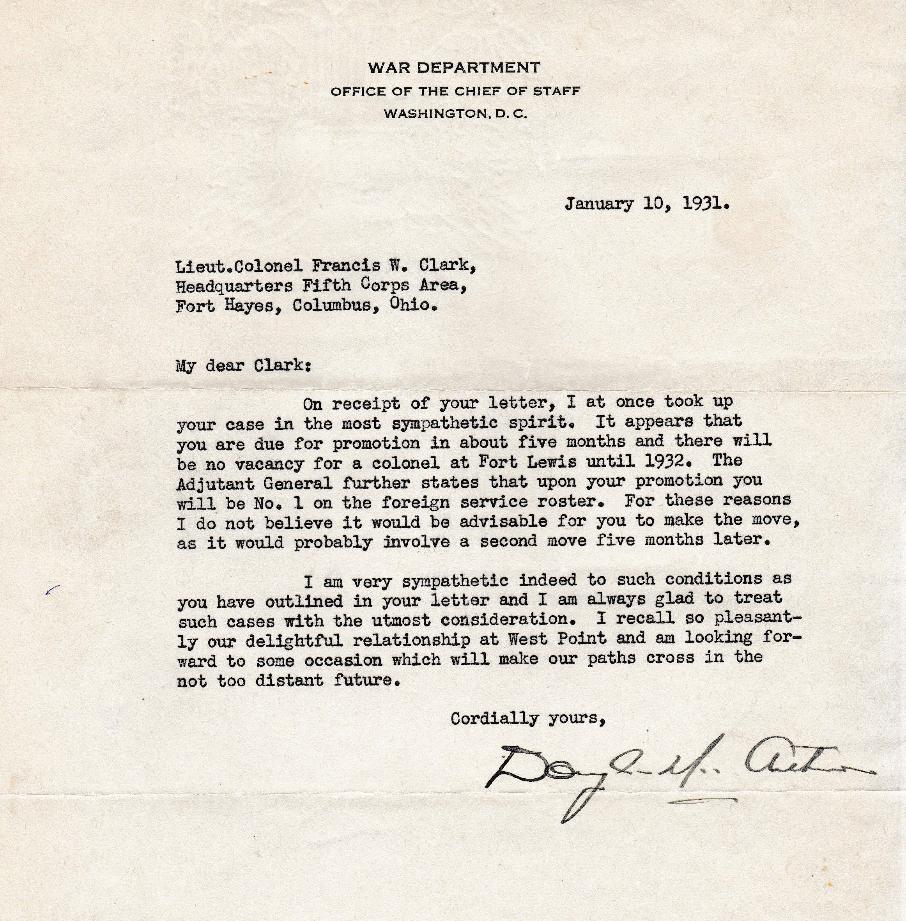
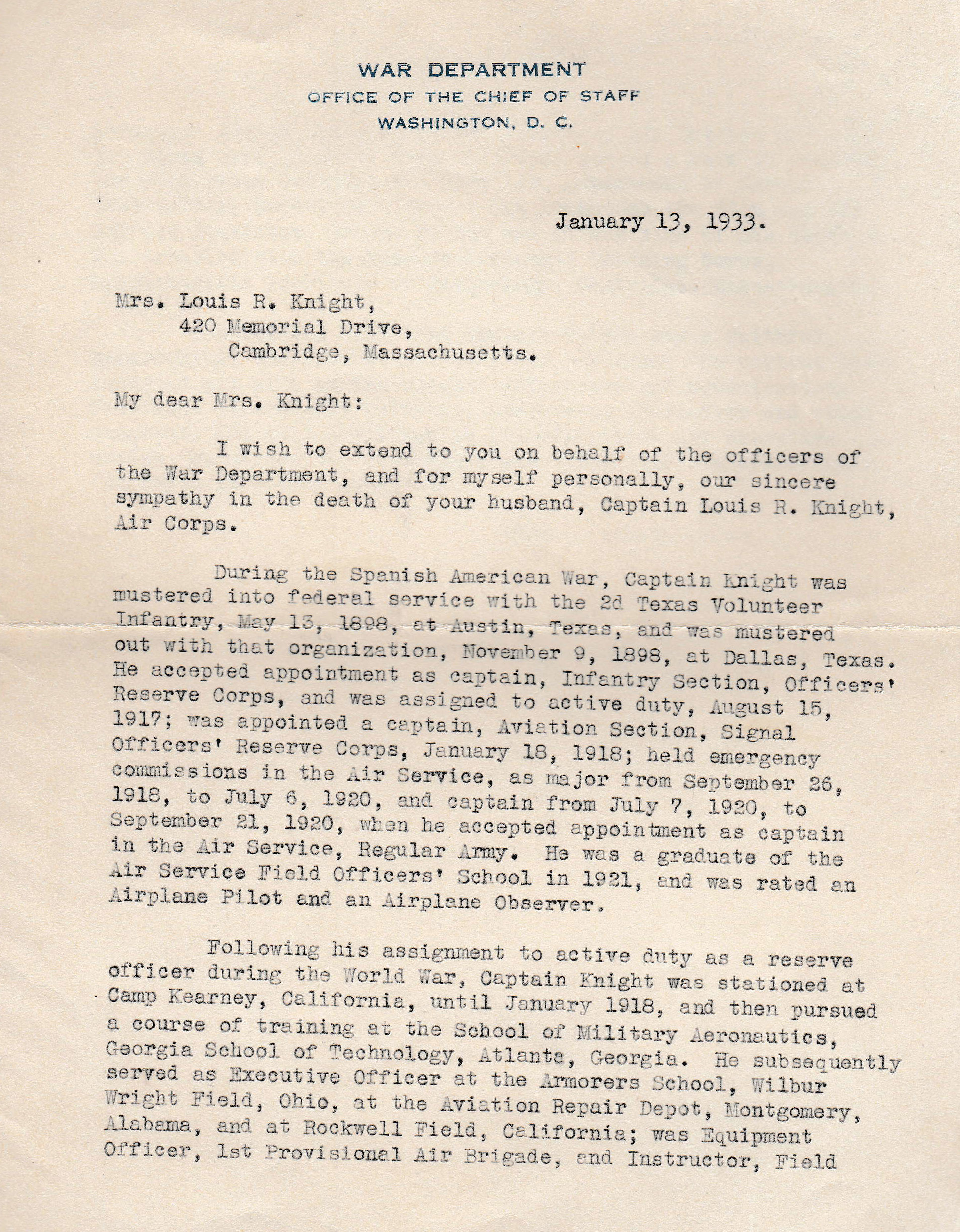
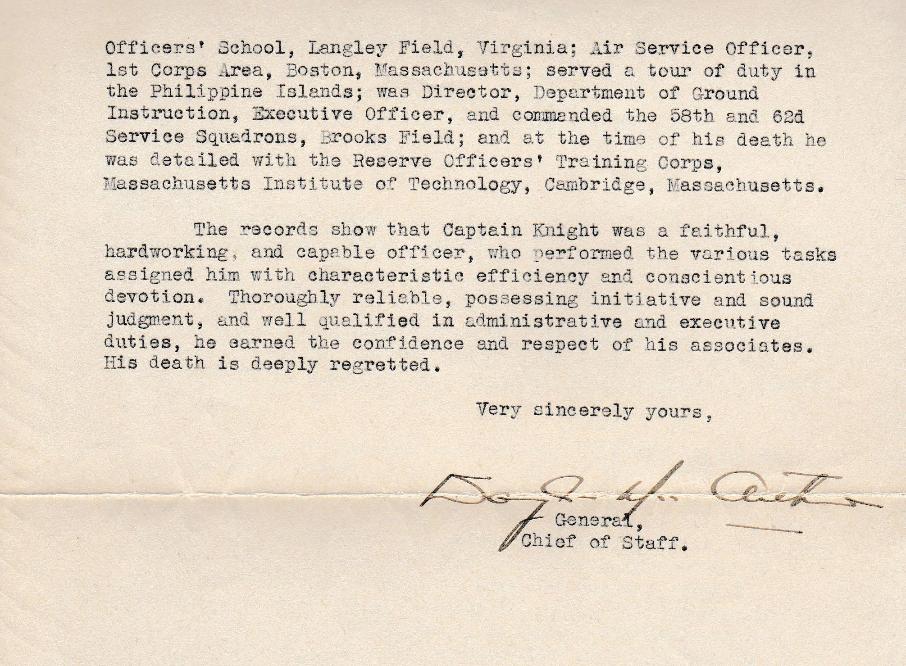
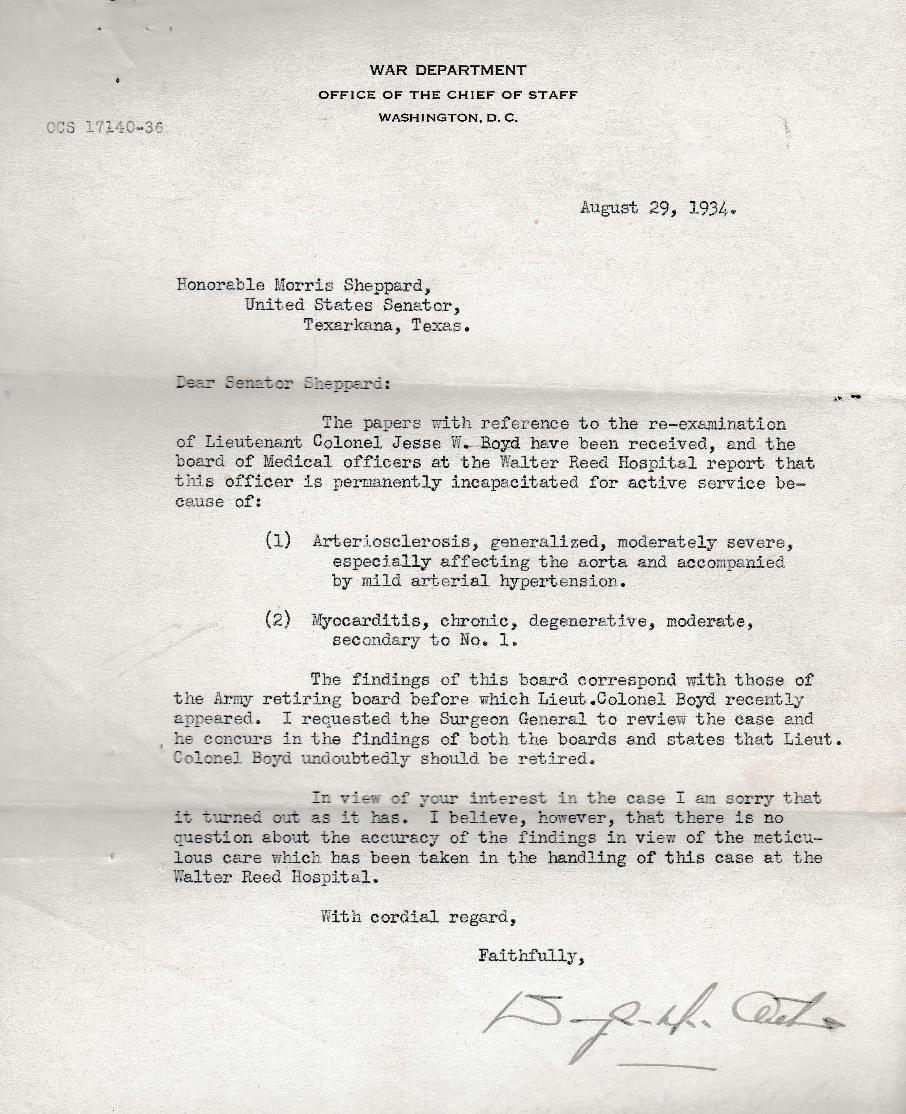
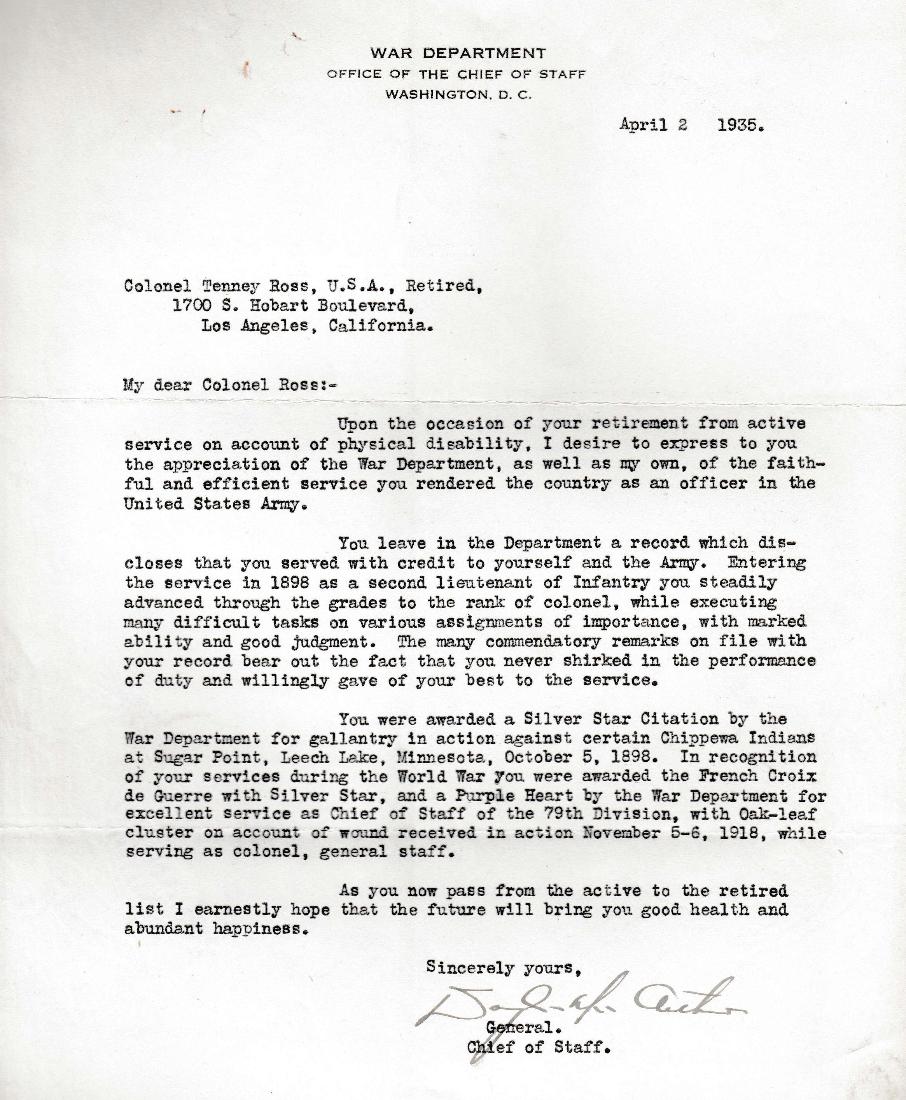
MacArthur Signed Photograph As Chief of Staff, 1932
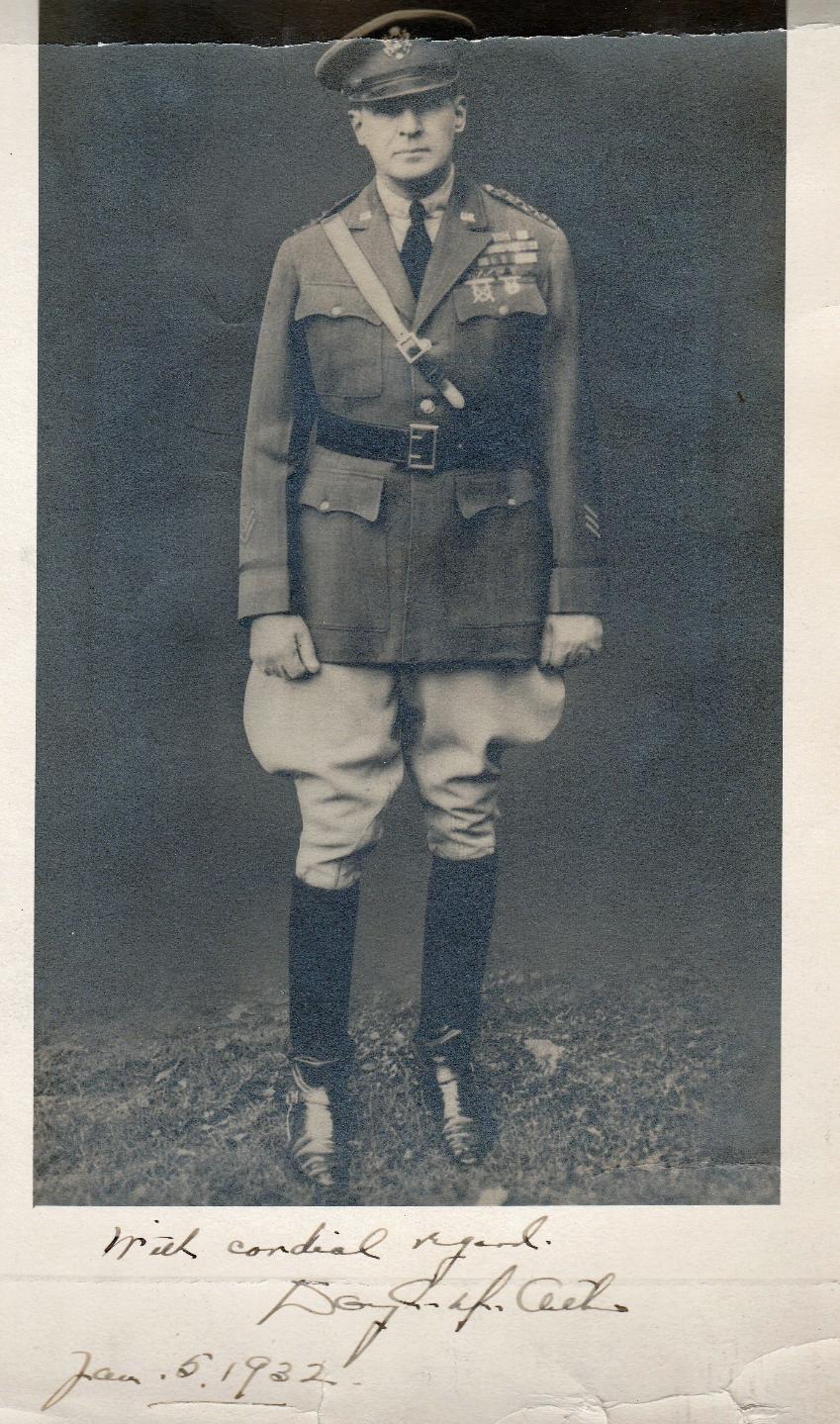
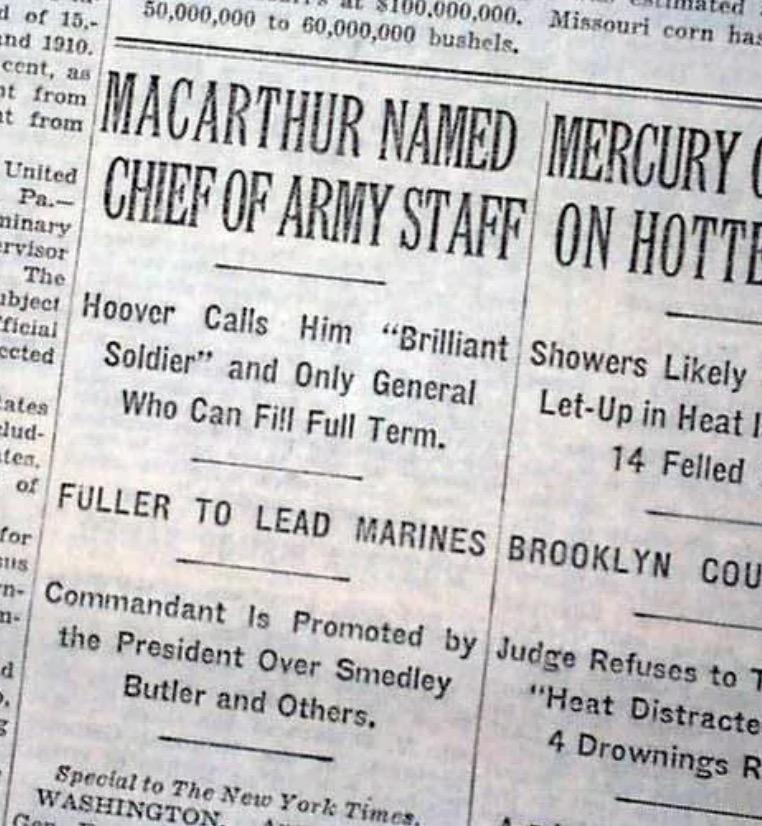
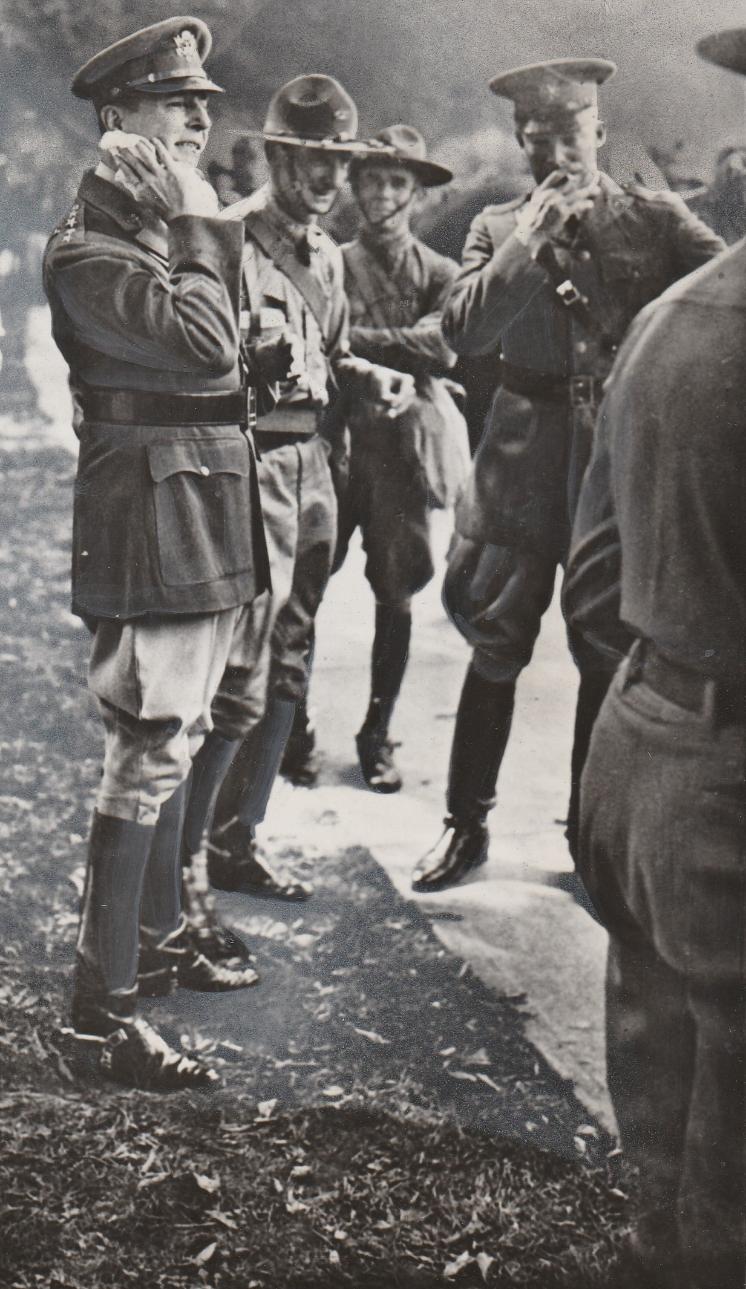
Army Chief of Staff Douglas MacArthur at the 1932 Washington, D.C. Bonus March. His aide, Colonel Dwight D. Eisenhower is on the right.
